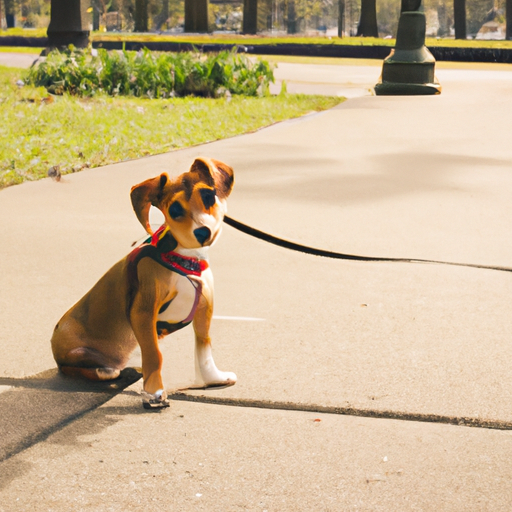Walking can be an exciting and fun adventure for your puppy, but what happens when your little one refuses to take a step? This guide is designed to help you understand and navigate this common challenge.
1. Understanding the Problem
Firstly, it’s important to understand that it’s perfectly normal for a puppy to resist walking. After all, everything is new and potentially scary for them.
Reasons Why Your Puppy May Not Want To Walk
- Fear and insecurity: The outside world can be a big, scary place for a small puppy.
- Lack of training: Your puppy may not understand what is expected of them.
- Physical discomfort: There might be an underlying health issue that makes walking uncomfortable for your puppy.
2. Addressing Fear and Insecurity
Your puppy’s refusal to walk might be due to fear or insecurity. You can help them overcome their fears by gradually exposing them to the outside world.
Steps to Overcome Fear and Insecurity
- Start by letting your puppy explore your yard or a quiet area.
- Gradually increase the distance and introduce new environments.
- Reward your puppy with treats and praise for their bravery.
3. Training Your Puppy to Walk
If your puppy is healthy and not afraid, their reluctance to walk might be due to a lack of understanding. Here’s a step-by-step guide on how to train your puppy to walk on a leash:
- Introduce the Leash and Collar
- Start by letting your puppy wear the collar and leash around the house.
-
Reward them with treats and praise to create positive associations.
-
Teach Your Puppy to Follow You
- Walk around the house with the leash in hand.
-
Use treats and praise to encourage your puppy to follow you.
-
Gradually Transition to Outdoor Walks
- Start with short walks close to home.
- Gradually increase the distance as your puppy gets comfortable.
4. Addressing Physical Discomfort
If your puppy is still refusing to walk, they might be experiencing physical discomfort. Check for any signs of injury or illness, like limping, wincing, or refusing to eat.
Common Health Issues That Can Affect Walking
| Health Issue | Symptoms | Solution |
|---|---|---|
| Paw Injury | Limping, licking or chewing at the paw | Consult a vet |
| Joint Issues | Difficulty moving, stiffness | Consult a vet |
| Illness | Loss of appetite, lethargy | Consult a vet |
5. Making Walks More Fun
Making walks more fun can also encourage your puppy to walk. You can do this by:
- Introducing Fun Elements
- Bring along a favorite toy or introduce new ones during the walk.
- Changing the Route
- A change of scenery can make walks more interesting for your puppy.
6. When to Consult a Vet
If your puppy is consistently refusing to walk and you’ve ruled out fear, training issues, and discomfort, it’s time to consult a vet. They can conduct a thorough check-up and provide advice tailored to your puppy’s needs.
7. Patience and Persistence
Remember, patience and persistence are key when dealing with a puppy who doesn’t want to walk. It might take time, but with consistent effort, you can help your puppy enjoy their walks.
8. FAQ
Q: How long should walks be for a puppy?
A: As a rule of thumb, a puppy’s walk should last 5 minutes for every month of their age.
Q: Can I carry my puppy if they don’t want to walk?
A: It’s best to encourage your puppy to walk, but you can carry them if they’re scared or tired.
Q: What if my puppy is scared of other dogs or people?
A: Gradual exposure and socialization can help your puppy overcome their fear.
Remember, every puppy is unique. What works for one might not work for another. Be patient, be consistent, and don’t hesitate to seek professional advice if needed. Happy walking!



